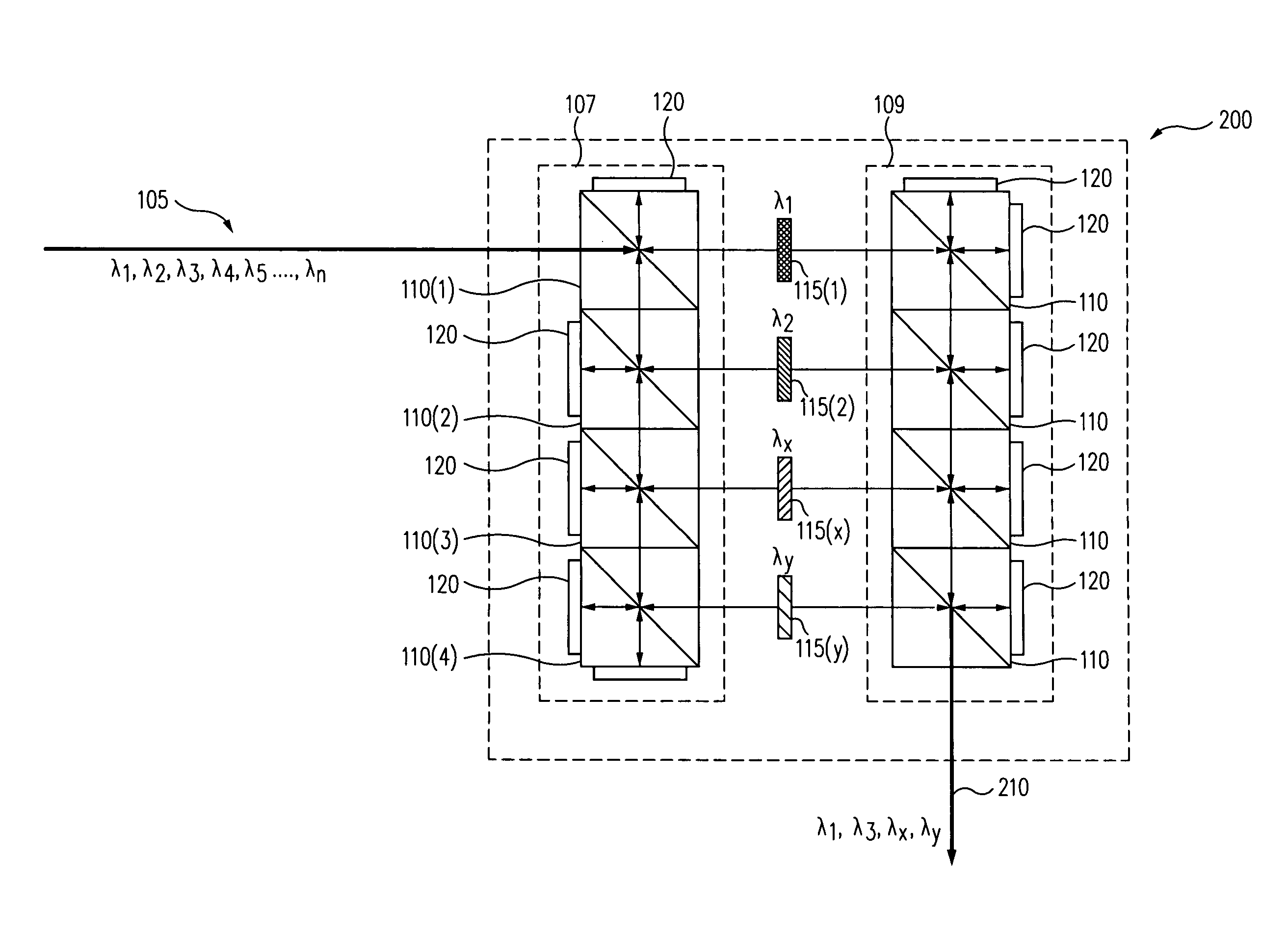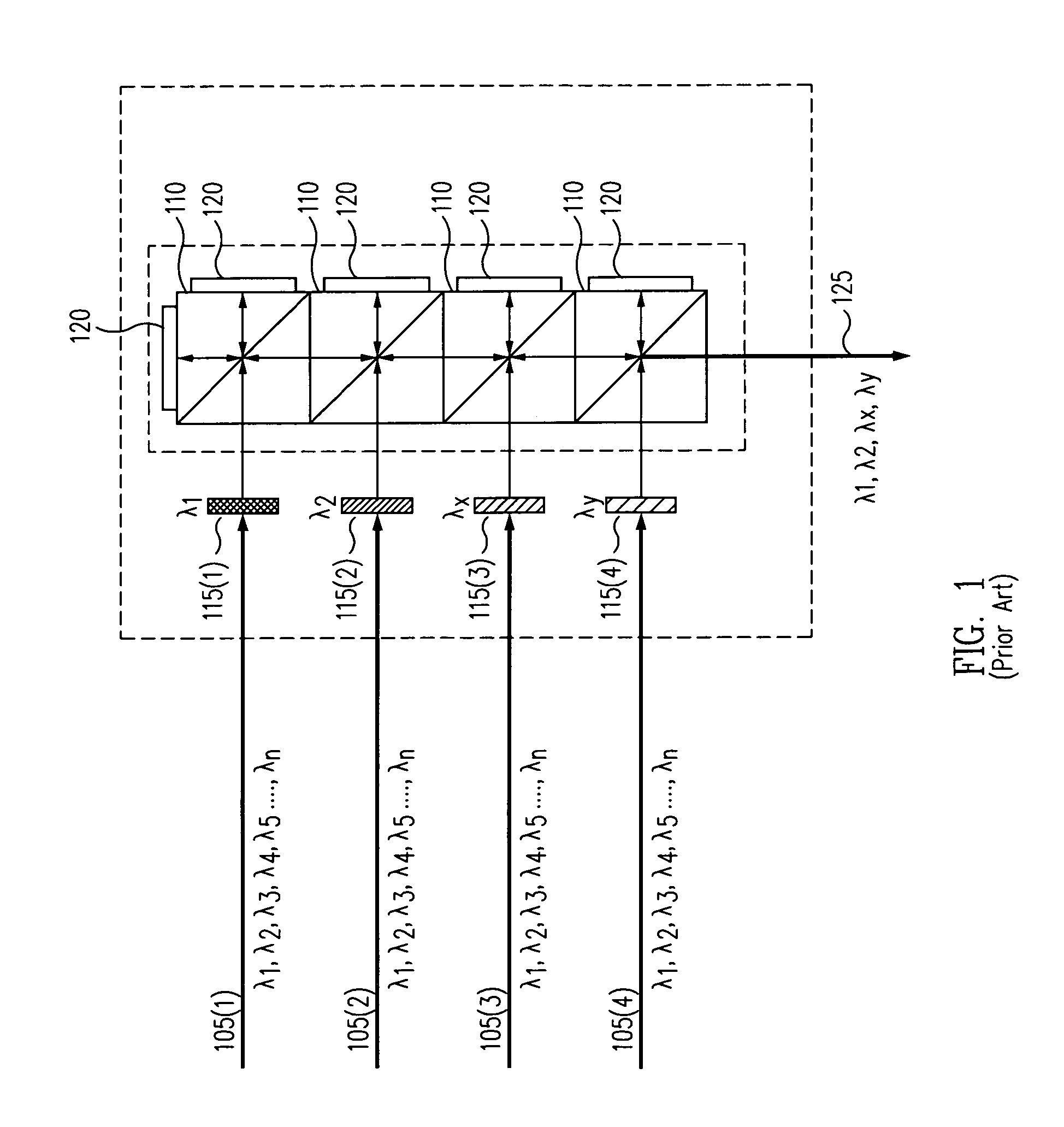Light beam conditioner
- Summary
- Abstract
- Description
- Claims
- Application Information
AI Technical Summary
Benefits of technology
Problems solved by technology
Method used
Image
Examples
Embodiment Construction
[0022]Systems and techniques provided herein may allow for more flexible spectroscopy than provided by existing spectroscopy systems.
[0023]Optical spectroscopy systems often have need for selecting multiple wavelengths, either individually or simultaneously, in any desired combination. In Raman spectroscopy, for example, the argon ion laser is a popular choice, and generates a number of useful wavelengths (e.g., 457.9 nm, 488.0 nm, 514.5 nm, etc.). In certain materials, especially biological specimens, fluorescence is aggravated by illumination by shorter wavelength light, so that longer wavelength lasers, i.e., toward the infrared, are preferred. Therefore, a convenient means for selecting wavelengths from one or more laser sources is beneficial.
[0024]In order to provide enhanced flexibility in spectroscopy, systems and techniques provided herein include optical beam splitting or dispersal, filtering and recombining designs. As a result, a multiple wavelength source of light can be...
PUM
 Login to View More
Login to View More Abstract
Description
Claims
Application Information
 Login to View More
Login to View More - R&D
- Intellectual Property
- Life Sciences
- Materials
- Tech Scout
- Unparalleled Data Quality
- Higher Quality Content
- 60% Fewer Hallucinations
Browse by: Latest US Patents, China's latest patents, Technical Efficacy Thesaurus, Application Domain, Technology Topic, Popular Technical Reports.
© 2025 PatSnap. All rights reserved.Legal|Privacy policy|Modern Slavery Act Transparency Statement|Sitemap|About US| Contact US: help@patsnap.com



